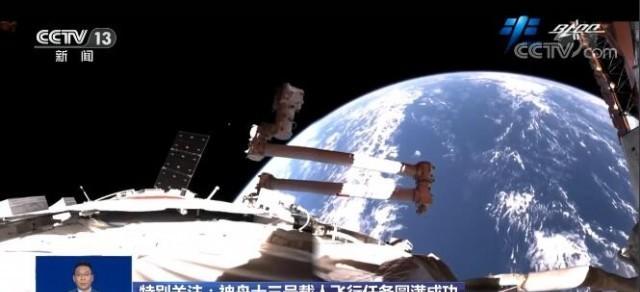CCTV network news: The Shenzhou 13 mission is a decisive battle and a final battle in the key technical verification stage of the space station, and it is also a key battle in the process of space station orbit construction. The return of Shenzhou XIII also marks the conclusion of the space station's key technical verification phase. So, what key technologies have been verified at this stage, and what role will these technologies play in the future construction of the space station?

On April 29, 2021, the First Vehicle of the Chinese Space Station Mission, the Tianhe Core Module, was successfully launched, embarking on a journey to explore the universe. During the one-year period in orbit, the manned space project completed a total of 5 launch missions, sending the Tianhe core module and 2 manned spacecraft and 2 cargo spacecraft into space. Seven key technologies were validated on orbit, including: space station propellant replenishment, regenerative bio-protection, flexible solar cell wings and drive mechanisms, large flexible combination control, assembly and construction, extravehicular operation, and on-orbit maintenance.
The Tianhe Core Capsule is the largest and most complex spacecraft developed by the mainland so far, not only to carry astronauts for a long time, but also to carry out a large number of scientific experiments and technical verifications in orbit, all of which require sufficient power as a support. To this end, scientific and technological personnel have tailored a new space "wing" for it - flexible solar array. Compared with the traditional solar array, the thickness of the flexible solar wing single plate is less than 1mm, and the unit area weight is only half of the traditional solar array, which can not only repeat the collection, but also increase the power generation capacity by 1 times, and greatly extend the life of the spacecraft.
In addition to sufficient energy supply, in terms of manned environmental control, the core module is equipped with a regenerative life support system, which realizes the regeneration of oxygen in the cabin, the treatment of human metabolites such as carbon dioxide and the removal of harmful gases, and realizes the recycling of water resources, ensuring the long-term residence of astronauts in orbit, and greatly reducing the upward carrying capacity of consumables such as oxygen and water. It is equipped with an active temperature control fluid circuit, that is, an air conditioning system, to ensure that the air temperature, humidity and the operating temperature of the instrument and equipment are within the appropriate range, ensuring the safety and comfort of the residence.
Berlin Hou, deputy chief designer of the space station system of the Fifth Academy of Aerospace Science and Technology Group: We use regenerative life protection technology, we can collect the condensate collected in the cabin or the urine of astronauts, we will recycle it, and then we will process it into drinking water. At the same time, we will electrolyze it into oxygen that astronauts can use. This is also the first time we have used it. We've actually done a very good job with this system so far. Including the 3-month residency period of the Shenzhou 12 multiplier group and the 6-month residency period of the Shenzhou 13 multiplier group, the whole system is used very well. That is to say, in fact, a total of these two astronaut crews, and then a total of 9 months in orbit, we all use renewable resources.
Source: CCTV